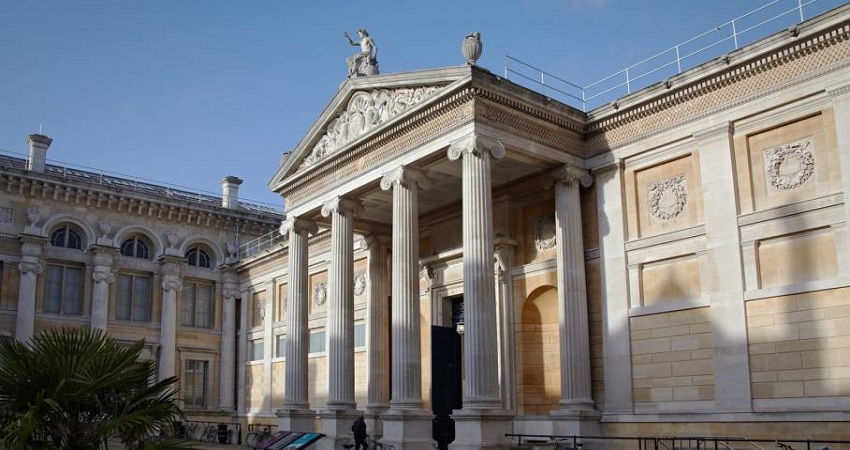Ashmolean Museum

Metropolitan Museum
March 9, 2020
Louvre Museum
March 9, 2020Ashmolean Museum
The Ashmolean is Oxford University’s Museum of Art and Archaeology. Opened in 1683, it is the oldest public museum in the UK. The museum has incredibly rich and diverse collections from around the globe, ranging from Egyptian mummies and classical sculptures to the Pre-Raphaelites and modern art.
The Ashmolean Museum houses an extensive collection of Islamic ceramics, originating from a wide region stretching from Spain to Central Asia, and ranging in date from the earliest centuries of Islam to the 19th century. Some of the Iranian Arts in This museum:
Pottery from Iran 1600-1800
The 1600s saw a boom in the production of ceramics to supply the burgeoning Iranian cities made rich in manufacturing and trade. Chinese porcelain remained highly fashionable and continued to inspire Islamic potters to manufacture of fine blue-and-white pieces.
However, other wares produced in this period break away from the Chinese model and use fully Islamic techniques and patterns. Luster painting enjoyed renewed popularity after three centuries of decline, while carved and molded vessels continued to be made alongside under-glaze and slip-painted wares.

Saucer with astrological decoration
This object is decorated with cycles of astrological symbols and figures. The twelve signs of the zodiac and the six major constellations are depicted on the body of the bowl, the animals of the Far Eastern zodiacal tradition on its lid, and the seven planets on the saucer.
Tiny inscriptions identify the images on the bowl and those along the rim of the saucer, while the animals on the lid are named in the lines of poetry beneath them. Two crowned heads and human-faced suns decorate the front and back of the spoon, and a human-faced sun also appears in green enamel on the back of the saucer. Lines of poetry arranged in cartouches around the rim of the saucer dedicate this set to Fath -Ali Shah.


